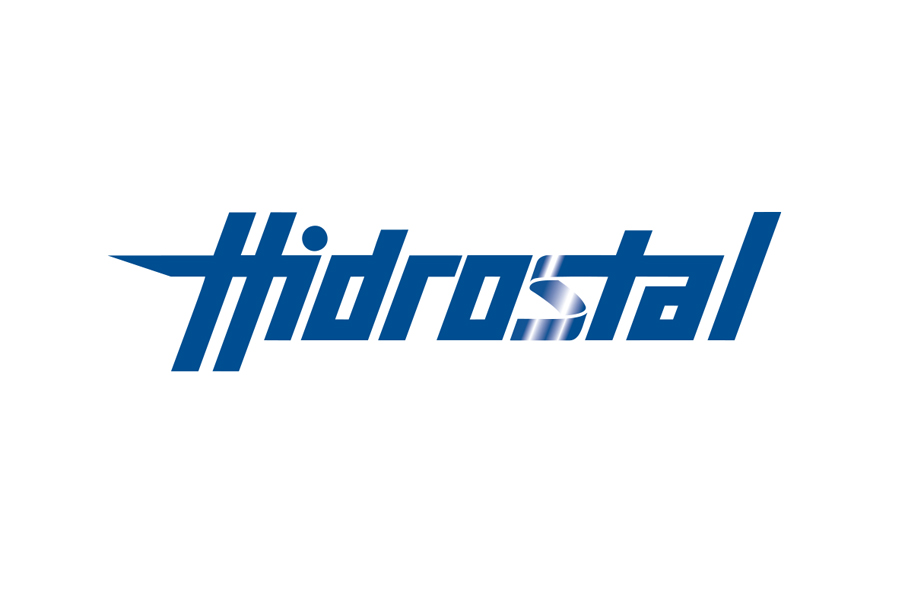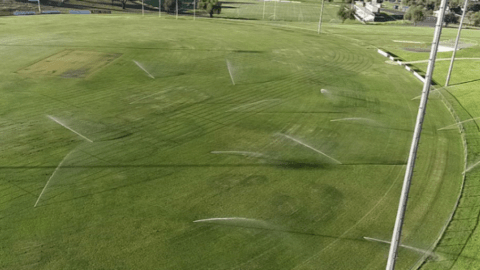By Lauren DeLorenzo, Journalist, Pump Industry magazine
The Warrawoona Gold Project has reached a number of significant milestones in the first half of 2022, achieving its first gold pour in May. The project is expected to ramp up to 90,000 ounces per year during the first stage of production, relying on a range of equipment to keep up this pace. Here, we look at the major developments of the project, and the vital role of pumps in delivering the final result.
As one of the highest margin and largest undeveloped gold projects in the country, the Warrawoona Gold Project has spent the first half of 2022 reaching significant milestones. Ore processing began in April 2022, and the first gold pour was achieved in May, just over one year after construction began for the project.
The first gold pour marks the beginning of the mine’s goal of producing a total of 658,000 ounces of gold over its eight-year lifetime. The project is located in the East Pilbara district of Western Australia’s Pilbara Goldfield and is owned by Calidus Resources, which estimates a sustained cost of $1,290 per ounce of gold during the mine’s years of operation.
A positive feasibility study released in September 2020 highlighted that these results could be achieved via a 2mtpa conventional Carbon in Leach (CIL) processing circuit with single stage crush and SAG mill. The study also highlighted that underground reserve increases by 30 per cent due to planned resource extensional and infill drilling.
The potential output of this mining region could be increased, with Calidus undertaking a Definitive Feasibility Study on the nearby Blue Spec Deposit, due to be delivered mid-2022. The study is investigating how Blue Spec could leverage the existing Warrawoona infrastructure to make the most of the equipment and facilities at the mine.
Partners and contracts
The plant design involves a single stage crushing circuit and a single stage SAG mill grinding circuit to produce leach feed slurry with a p80 of 150 microns. Calidus has contracted GR Engineering Services for the design and construction of the site’s process plant and associated infrastructure, while Citic provided the 4,500kw SAG mill.
Macmahon Holdings has tendered for open pit mining, and the contract is expected to produce $220 million in revenue over 54 months. Macmahon has also been awarded contracts with new mining clients Strandline Resources and Bellevue Gold in Western Australia.
Mining methods
Calidus contracted Macmahon for its open pit and underground mine design, which is expected to produce $220 million in revenue over 54 months.
The Klondyke deposit will use conventional open pit mining methods, including cleaning, stripping and stockpiling of near surface material, initial pioneering work in pit areas with high topographic relief to establish suitable sized working bench areas for the proposed mine fleet and RC grade control programs.
This also includes haulage of ore to the run-of-mine (ROM) pad stockpiles to be fed to the crusher and haulage of waste to nearby WRDs or in-pit backfilling.
Mining was conducted in two phases. The first phase, pioneer mining, proceeded until a 35m mining width was achieved. Areas were selectively drilled, blasted and mined, before commencing the second production phase with normal mining operations.
The mine uses a CIL process, which extracts and recovers gold from the ore. Using this method, crushed gold ore is treated with cyanide and carbon leached simultaneously, lowering operation costs and increasing gold recovery rate to almost 99 per cent.
Gold leaching begins with comminution, where ore is crushed and ground into fine particles. Water is then added to the product, creating a mud-like slurry that is then pumped into a thickener. In the thickener, gold particles sink to the bottom, and are passed to processing downstream.
The next processing phase is a CIL circuit, where cyanide is used to dissolve the ore. Then, activated carbon is fed into the process in the opposite direction of the slurry stream flow, and gold adsorbs onto the carbon. The carbon moves into an elution column, which reverses the adsorption process, stripping gold off the carbon.
Gold sludge is then removed through a pumped water spray, before the product is mixed with fluxes and heated in a furnace to produce bars that will be transported to a gold refinery for further purification.
As the ore from the mine is relatively soft, a stage three crushing plant was chosen for cost and maintenance savings. Because the transitional ore is soft, the rate that the plant processes the raw material is theoretically higher. However, to prevent overuse of the downstream comminution circuit, the design feed rate was limited to 2.4mtpa.
The transitional ore throughput rate was the determining factor in the design of the processing plant’s conveyors, leaching circuits, thickener and tailings pumps.

Commissioned processing plant. Credit: Calidus Resources.
Employing pumps across the project
Slurry pumps
The mine will use slurry pumps to move residual byproduct from the processing plant to be stored in a tailings pond. The extreme pH levels and viscosity of tailings ponds causes wear on centrifugal and positive displacement pumps, as extremely acidic or alkaline tailings wear out the impellers on centrifugal pumps, causing them to lose tolerance and suction abilities.
Centrifugal pumps can be used to pump tailings up to a limit, beyond which positive displacement pumps are required (typically a piston diaphragm or hydraulic piston pump).

Thickener Water Commissioning. Credit: Calidus Resources.
Thickener pumps
The mine will make use of powerful thickener pumps, which can handle the abrasive high viscosity and high density mineral concentrate in thickener underflow transfer. Thickeners increase the content of solids and the gold concentration of the slurry, separating water and processing it back upstream for recycled use.
Thickeners also separate unwanted product and process it into the tailings stream. Thickeners require valve installations for both overflow and underflow control. Butterfly valves and knife gate valves are the most common solutions for thickener overflow, while pinch and knife gate valves are most common for underflow.
Centrifugal pumps are most commonly used in mineral extraction process plants, and are designed to function in severe conditions for long periods of time. Because of the excessive wear on the inter-stage passages of these pumps, they are single-stage equipment, with wear life of wetted components lasting up to two to three months.
When centrifugal pumps become overloaded, they can “pack up” and remove far less pulp, whereas the diaphragm pump can more easily compensate for overload. Diaphragm pumps can be regulated to accommodate any rate of flow, increasing or decreasing the rate of discharge until the density is correct.
Hose pumps can run dry with no risk of damage, and allow for quick and easy replacement of the pump. Because there are no moving parts in the product area, the product only comes into contact with the hose component.

Tailings pumps
A tailings dam has been constructed as part of the project, and tailings pumps will be used to move the mine tailings from the mining operation to the dam. Tailings present a number of challenges for pumps due to the high solid slurries, which often have very low or very high pH levels.
High solid slurries can damage traditional centrifugal pumps due to wear of components, causing them to lose suction and efficiency.
On the other hand, acidic and alkaline tailings cause troubles for centrifugal and positive displacement pumps, causing impellers to wear out and resulting in tolerance loss, reduced suction capabilities, and costly downtime and spare parts.
Due to this, slurry pumps are used for tailings transfer as they are designed specifically for pumping media that contains solid particles, as well as solvents, acids, alcohol or petroleum. They are more robust than other pumps in order to be able to withstand the additional wear they are subject to, ensuring a longer pump life and less maintenance.

Overall site view. Credit: Calidus Resources.
Tailings storage facility
According to the works approval provided by the Western Australian Department of Water and Environmental Regulation, the tailings storage facility decant structures requires a mobile decant pump on the upstream side of the embankment to collect supernatant water released from the discharged tailings slurry into the facility, with incidental rainfall runoff and transferred seepage recovered from the seepage collection trench.
For underdrainage, a seepage interception trench downstream of the main embankment is needed to allow for collection and return of any near surface seepage. The trench is to run parallel to the main embankment downstream toes.
If seepage is intercepted by the trench, a submersible pump is to be installed in a seepage recovery sump to pump water back into the facility impoundment to be collected by the decant recovery system. Daily inspection logs are also required for all pumps and valves in the facility.

Mill lubrication system installed. Credit: Calidus Resources.
Mill lubrication
The mill requires a hydraulic lubrication system, whereby a pump forces oil to flow into gears and bearings to lubricate the engines.
These systems typically utilise lubrication pumps, as well as a range of valves including check, relief and ball valves. Depending on the design of the system, different lubrication pumps will be more suitable.
In circulation lubrication, gear pumps are generally used as they are able to generate high static pressure in the system; special piston pumps are typically used for fresh oil or economy lubrications systems; volute casing or multistage pumps are used to supply oil to large plain bearings as they have a throttling bush at the shaft passage; and for grease-lubricated plain bearings, piston pumps can be used.
Process plant commissioning
In May, the first gold pour from the Carbon in Leach (CIL) Circuit was achieved, marking the successful completion of commissioning of the full processing circuit. A total of 33kg of gold was poured.
The processing plant is also now fully operational and has achieved milling rates of 2.2Mtpa with the full ramp up to 2.4Mtpa expected to be completed in the second quarter of the year.
Calidus Managing Director, Dave Reeves, said, “Commissioning of our processing plant was highly successful and is a tribute to the skills of our team. We are increasing throughput and gold output with the aim of reaching full production rates this quarter.
“We wish to thank all Calidus personnel, who, with our key contractors GR Engineering Services Limited, Machmon Holdings Limited and Assetlink Services Limited, have allowed us to deliver the Warrawoona Gold Project, on time and on budget.
“Over the remainder of the quarter, we will focus on our operational ramp up and other site activities including our active exploration programs that have taken place during the course of development.”



















